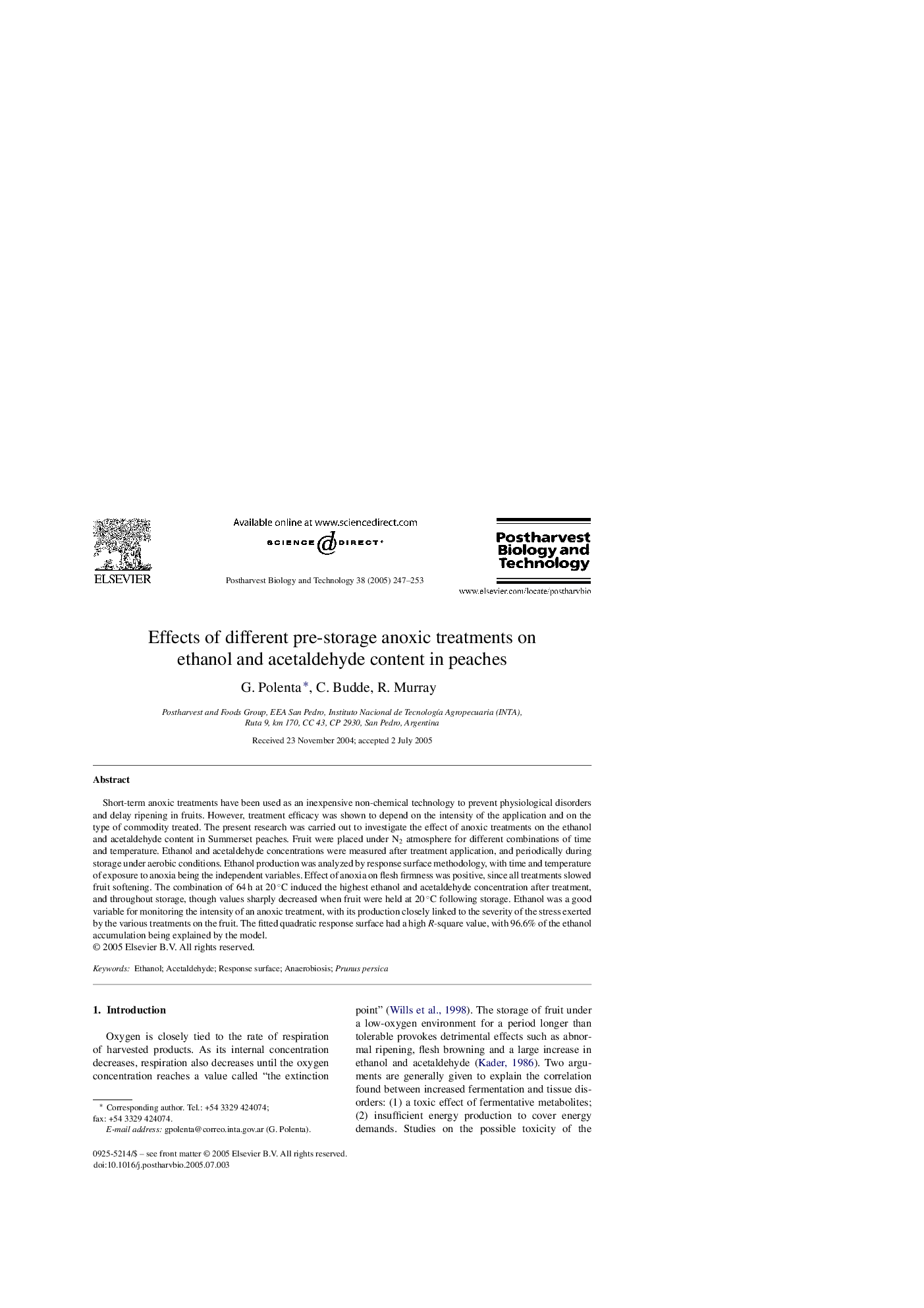| Article ID | Journal | Published Year | Pages | File Type |
|---|---|---|---|---|
| 9475103 | Postharvest Biology and Technology | 2005 | 7 Pages |
Abstract
Short-term anoxic treatments have been used as an inexpensive non-chemical technology to prevent physiological disorders and delay ripening in fruits. However, treatment efficacy was shown to depend on the intensity of the application and on the type of commodity treated. The present research was carried out to investigate the effect of anoxic treatments on the ethanol and acetaldehyde content in Summerset peaches. Fruit were placed under N2 atmosphere for different combinations of time and temperature. Ethanol and acetaldehyde concentrations were measured after treatment application, and periodically during storage under aerobic conditions. Ethanol production was analyzed by response surface methodology, with time and temperature of exposure to anoxia being the independent variables. Effect of anoxia on flesh firmness was positive, since all treatments slowed fruit softening. The combination of 64 h at 20 °C induced the highest ethanol and acetaldehyde concentration after treatment, and throughout storage, though values sharply decreased when fruit were held at 20 °C following storage. Ethanol was a good variable for monitoring the intensity of an anoxic treatment, with its production closely linked to the severity of the stress exerted by the various treatments on the fruit. The fitted quadratic response surface had a high R-square value, with 96.6% of the ethanol accumulation being explained by the model.
Related Topics
Life Sciences
Agricultural and Biological Sciences
Agronomy and Crop Science
Authors
G. Polenta, C. Budde, R. Murray,
